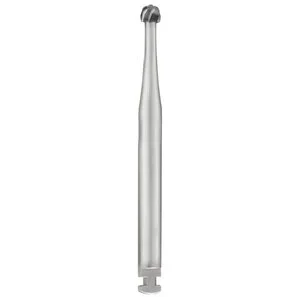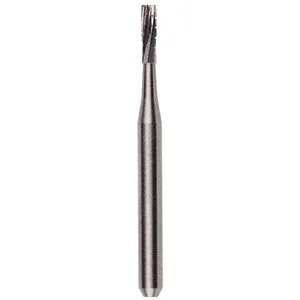Filter Products
Filter Products
Burs
As low as
$46.36As low as
$20.37As low as
$42.17As low as
$42.17As low as
$25.54As low as
$43.23- Free, fast shipping included
- No order minimum
- No subscription required
- No hidden fees
As low as
$41.07As low as
$43.23- Free, fast shipping included
- No order minimum
- No subscription required
- No hidden fees
As low as
$20.17- Free, fast shipping included
- No order minimum
- No subscription required
- No hidden fees
As low as
$43.23- Free, fast shipping included
- No order minimum
- No subscription required
- No hidden fees
As low as
$15.75What are dental burs used for?
Dental burs are used for cutting, shaping, and refining hard tissues like enamel, dentin, and bone during various procedures. They play a crucial role in restorative dentistry by preparing teeth for fillings, crowns, and veneers, ensuring precise removal of decayed or damaged tissue to achieve optimal restoration fit. Additionally, in endodontic treatments, dental burs aid in accessing and shaping root canals, facilitating thorough cleaning and disinfection to promote successful outcomes. These versatile instruments are also vital in surgical dentistry for procedures like tooth extractions and implant placement, enabling precise incisions and bone contouring while minimizing trauma to surrounding tissues. Overall, dental burs are indispensable for enhancing procedural precision, efficiency, and patient comfort in modern dental practice.
What are the different types of dental burs available?
- Carbide burs are known for their durability and versatility. They are made of tungsten carbide, making them suitable for various dental procedures, including cavity preparation and crown adjustment.
- Diamond burs feature diamond particles bonded to the bur's surface, offering exceptional durability and efficiency for cutting hard materials like enamel and porcelain.
- Steel burs are cost-effective and commonly used for basic procedures and general use in dentistry, including initial tooth preparation and removal of soft tissue.
What are some of the most common dental bur shapes?
Some of the most common dental bur shapes include:
- Round burs are characterized by their rounded tip and are often used for initial tooth preparation and cavity access.
- Inverted cone burs have a cone-shaped tip that tapers inward, making them ideal for creating undercuts and refining cavity margins.
- Straight fissure burs feature a flat end with parallel sides and are commonly used for cutting and shaping tooth surfaces.
- Tapered fissure burs are similar to straight fissure burs, but with tapered sides, these burs are particularly useful for conservative preparations and enameloplasty.
What are the differences between HP, RA, and FG shanks in dental burs?
Understanding the differences between HP, RA, and FG shanks is essential for dental professionals to select the most appropriate tools for specific procedures. Here's a concise breakdown of each type:
- HP (Latch Type) shanks feature a latch mechanism for secure attachment to high-speed handpieces, commonly used in restorative dentistry for procedures requiring precise cutting and shaping.
- RA (Right Angle) shanks are utilized in low-speed handpieces and offer versatility for various procedures such as polishing, finishing, and intraoral adjustments.
- FG (Friction Grip) shanks are designed for high-speed handpieces and provide a secure grip through friction, enabling efficient cutting and drilling during procedures like cavity preparation and crown removal.




















